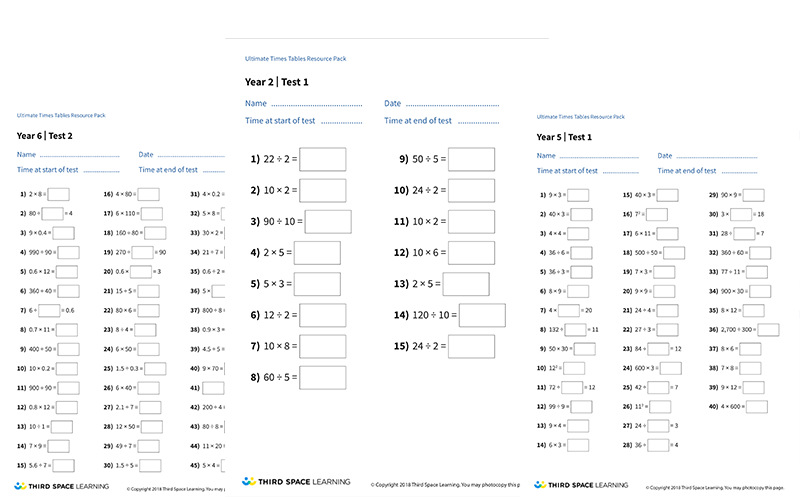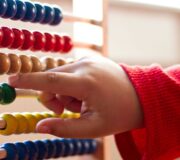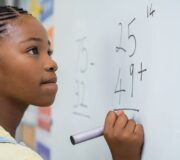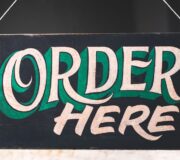How To Learn Times Tables At Home: The Best Way To Master Your Multiplication Facts
We’ve written this guide for parents of primary aged children and and their teachers who are wondering how to help children learn times tables at home.
Times tables or multiplication tables, or times table facts, depending what your school calls them, can often prove problematic to young children to learn. However, once your child reaches Year 2, it is almost exclusively the maths homework most often proffered.
Children need to learn their times tables in primary school. There is no way of getting away from it. They are essential when learning many new maths skills and concepts from the national curriculum, such as fractions, decimals, factors, etc.
Not knowing your times tables puts additional strain on your working memory when tackling such new concepts in maths. This will hinder the longterm transition of the new facts to the long term memory.
The simple truth is that if you don’t know your times tables by secondary school, then you’re starting at a severe disadvantage.
The goal is instant recall, and to encourage children to achieve this by the end of Year 4, there is now a Year 4 times tables test (the Multiplication Tables Check) that schools administer to keep track of how children are getting on.
Here at Third Space Learning, we have combined the knowledge of all of our tutors and teachers to explains how to learn times tables, how they fit into multiplication at school, and how you can help children with times tables at home, regardless of their year group and age at primary school.
FREE Times Tables Practice Packs for Years 1 to 6
Help your children practise their times tables, and identify which they might need more work on, with this set of free practice tests with a guide included!
Download Free Now!- How to learn times tables in Year 1 – 5 and 6 year olds
- How to learn times tables in Year 2 – 6 and 7 year olds
- How to learn times tables in Year 3 – 7 and 8 year olds
- How to learn times tables in Year 4 – 8 and 9 year olds
- How to learn times tables in Year 5 – 9 and 10 year olds
- How to learn times tables in Year 6 – 10 and 11 year olds
How to learn times tables in Year 1 – 5 and 6 year olds
Year 1 can be a challenging time for the average 5 year old.
They may well be in a new school, the work is more challenging and all of a sudden there seems to be a huge number of new rules in the classroom! After the play days of reception, this can come as a bit of a shock, but there is a way you can ease the burden on your child by helping them learn their times tables at home.
Here’s what you need to know to help your child succeed in multiplication in Year 1.
Your child doesn’t need to practise every times table
You will be pleased to hear that at this age, your child only needs to work on their 2, 5 and 10 times tables.
Use play or objects to understand numbers
At this age, it is important that you don’t rush in to teaching times tables at home, and that you make sure that the key concepts behind the maths used when working out times tables is already in place.
One way to do this is to use real-world objects to help your child grasp the meaning of numbers and their values – after all, what’s the use of counting in 2s, 5s or 10s, if you don’t know what those numbers really represent?
Something as simple as getting all of their toy cars out at once, pairing them up and asking them to count out how many there are can be a great way to do this.
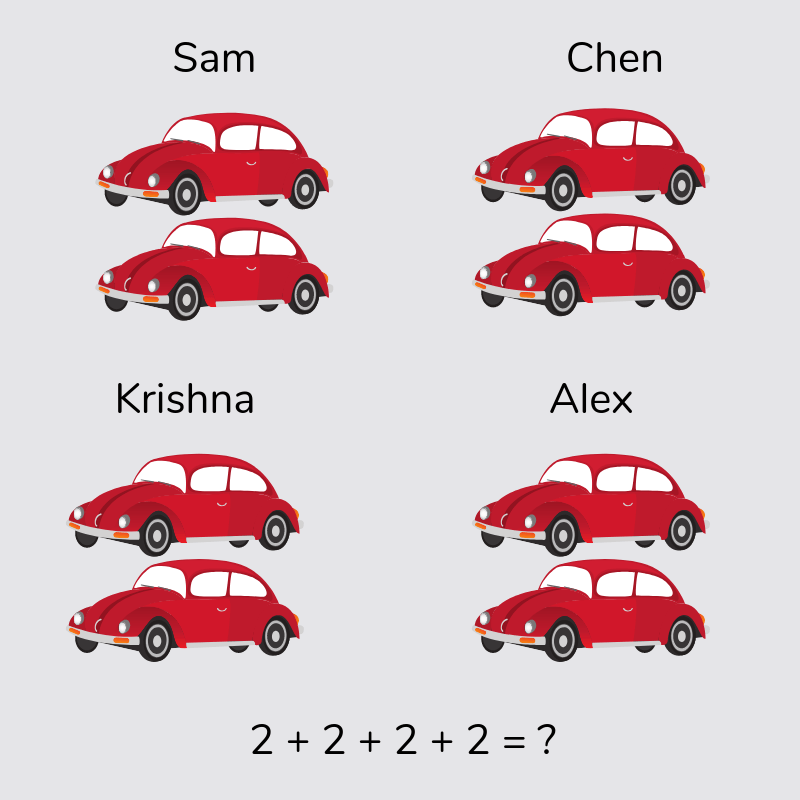
Real-life objects are also an excellent way to demonstrate the opposite (inverse) operation to multiplication which is division. You can also use times tables grids to show this.
For example, if you have just done the clothes wash and have 20 socks that are ready to be put away, ask your child to divide them by two so that you know how many pairs you will need by the end of the process.

Bringing maths into everyday activities around the home is a great way to answer the question of “how do I teach my child times tables?’ – and let’s not forget that it’s also an effective method of getting the kids to help with putting away the laundry or the tidying up the home!
There is no reason that knowing how to teach your child multiplication at home can’t help you with the chores too…
Counting in lots of 10 is one of the best ways to teach your child multiplication skills
10’s are often the easiest multiplication table for children to grasp thanks to their simple pattern of ending in a 0, regardless of which other number they are multiplied by.
To begin, have a go at finding some pictures with 10 objects in them and then ask your child how many there are altogether. You can work your way through the problem with them, counting all of the objects on the first round, and then helping them see that if there 3 lots of 10 objects, they can bring their multiplication skills into the mix.
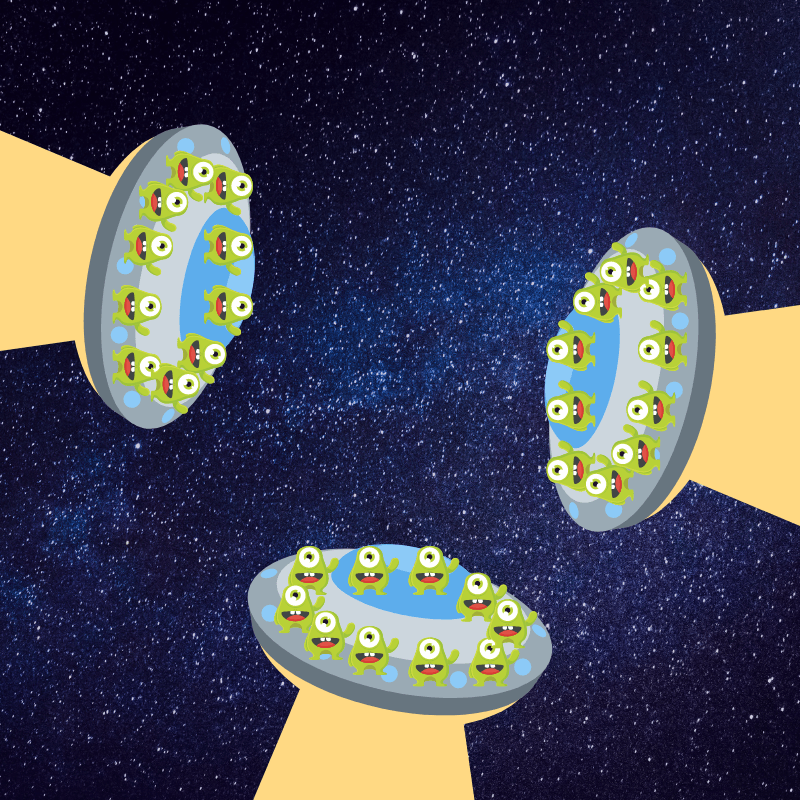
Number lines can help visualisation when teaching your child about times tables
If your child is struggling to understand the concept of multiplying by 10, a number line may help them to visualise the process.
You can use a number line to help them picture the jumps, or alternatively you could use a tape measure as a substitute in the likely scenario that you don’t have a number line at home.
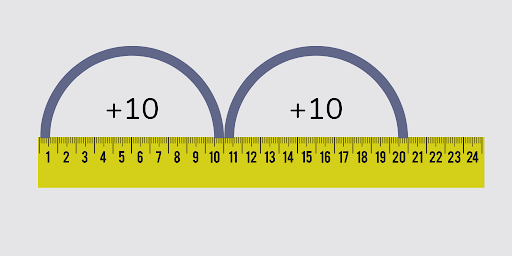
This is an easy way to teach a child times tables, as by showing your 5 year old how the 10’s continue going up all the way along the number line, you can introduce the idea of 2 lots of 10 equalling 20, 3 lots of 10 equalling 30 and so on.
As with all new bits of maths, a knowledge of place value is key before starting this.
Use the CPA (concrete-pictorial-abstract) approach to teach times tables to your child
Often used in primary schools, for those who haven’t heard of it, the CPA approach is simple.
Step 1 – Concrete: To begin, you should get a concrete example of the number you want to represent. An example could be 2 building blocks, or 4 shoes.
Step 2 – Pictorial: The next step is to represent the concrete item from above in the form of a picture. This could be a bar chart, a tally chart or any other way of getting the information down onto a piece of paper in a pictorial format.
Step 3 – Abstract: The third and final step is to then represent the number in an abstract manner by writing it down in it’s numerical form.
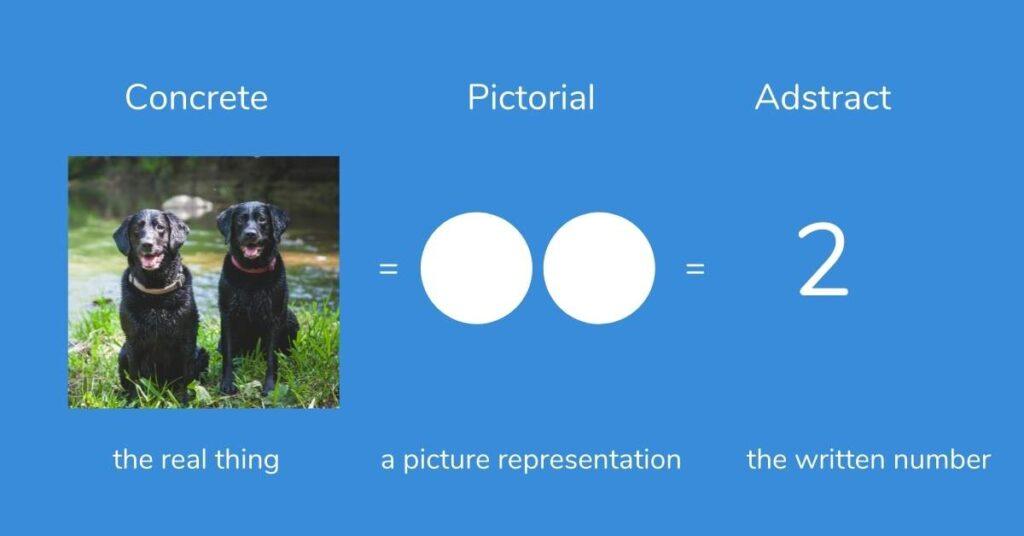
By bringing in the CPA approach to your decision of how to teach your child times tables, you will find that it is a fantastic way to help a child visualise numbers and gain a deeper understanding of the numbers that are being discussed, which should help them in the long term.
This is also the reason as to why it is useful to have counters or blocks at hand any time you do maths with young children!
Repeated addition can bridge the gap between adding up and multiplying
Repeated addition simply means adding a number to itself one or more times.
This will help your child get to the same result as a multiplication calculation, but by using addition, which will probably be more familiar to them. You can then use this approach to help teach your child about their times tables once they have grasped the concept.
So, for example:
2 x 3 written as repeated addition would be 2 + 2 + 2.
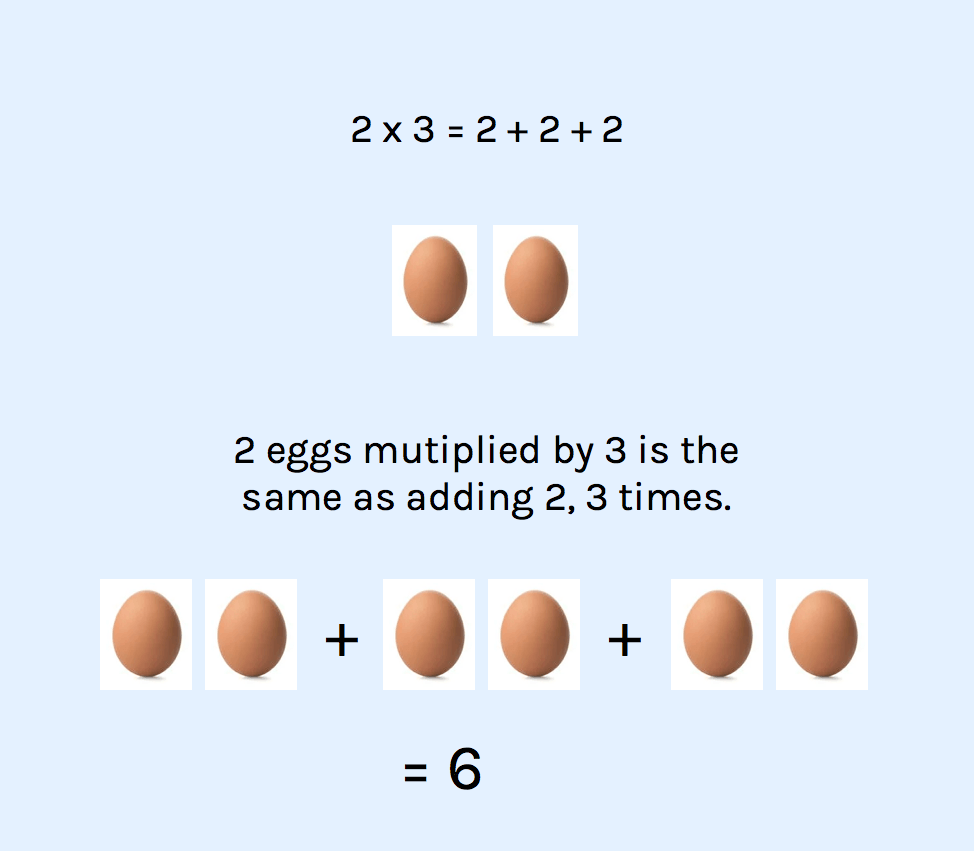
It’s a simple technique, but one that works well in the early stages of helping your child with times tables at home. (You can also try repeated subtraction to model division but this can be a trickier concept to grasp.)
Arrays are a great way to bring times tables to life on paper
Arrays are another visual method of representing multiplication.
You might recognise them from terms like ‘groups of’ or ‘lots of’, and they’re really handy for investigating how multiplication is related to division.
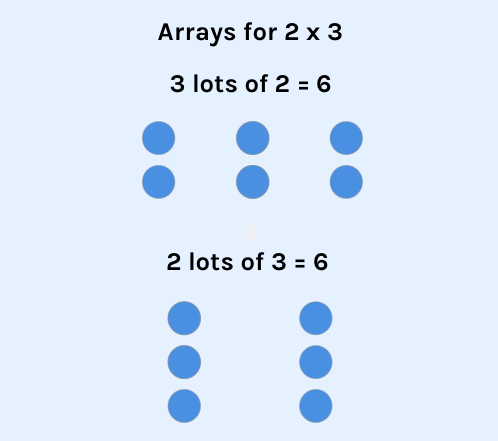
As you can see, this helps children to understand that multiplication involves more than one item.
Plus, it makes division much more accessible.
Have a go at dividing 6 into equally sized groups once you’ve tried the arrays for 2 x 3!
Be aware – Multiplication statements can be confusing for children
In Year 1, your child will learn how to present their multiplication in a number sentence, probably for the first time.
Even if your little one is a maths magician, they might find it tough to put it down on paper! This does not mean you should worry though, as there are plenty of things you can do at home when helping to teach your child about multiplication statements.
Keeping things simple, make sure you practise saying number sentences out loud together, then jotting them down with the right symbol.
This will give them a solid foundation when it comes to mathematical vocabulary down the line.
Try reading them out to each other and see how many you can write down correctly – remember to take turns so your child gets a chance to test you too!
2 x 3 = 6
6 ÷ 2 = 3
6 ÷ 3 = 2
2 x 4 = 8
8 ÷ 4 = 2
8 ÷ 2 = 4
After working through a few examples at home every week, you should start to see a drastic improvement in your child’s multiplication skills.
How to learn times tables at home: Fun ways to practise multiplication with 5 year olds
Times tables at-home activity 1: Foodiplication
Use small food items like raisins and grapes to up the stakes when practising grouping and arrays.
Counters can lose their novelty after a while, so spicing things up will certainly add to the fun!
Lay out a group of raisins (or whatever you prefer) and ask your child to group them into twos and threes before they eat them all.
This is a simple but effective way to encourage your child to think about the multiplication work they are doing, and they get the benefit of having an immediate tasty treat at the end!
Times tables at-home activity 2: Silly number sentences
The best way to prepare for multiplication in number sentences is to say number sentences out loud so they get used to the vocabulary.
Read the following phrases out loud with your child and see if they can repeat them back to you. To ensure that your child is engaged with the game, get them to do a silly voice when they repeat each number sentence back to you.
An example game could look like:
Say 2 x 3 = 6 in a lion’s voice.
Say 6 ÷ 2 = 3 in grandad’s voice.
Say 6 ÷ 3 = 2 in your teacher’s voice.
Say 2 x 4 = 8 in your most silly voice.
Say 8 ÷ 4 = 2 in my voice!
Say 8 ÷ 2 = 4 in a dog’s voice.
How to learn times tables in Year 2 – 6 and 7 year olds
If you have a 6 year old primary student heading into Year 2, you’ll find that there is a lot going on just in the world of times tables and multiplication!
By Year 2, your child should be able to write number sentences independently (e.g. 4 x 2 = 8). This is important as writing problems down will help them to keep track of their thinking and enable them to spot mistakes even if they have moved on to another part of the question.
Year 2 children need to understand commutativity (don’t panic, we will cover this later) and begin to solve simple multiplication problems. As well as knowing their 2, 5 and 10 times tables, they will benefit from understanding bar modelling, arrays and grouping.
How you can help your child learn multiplication tables using a bar model
Bar modelling is a visual representation of maths that is used in almost every primary school across the UK and beyond.
It uses long rectangles (bars) to show how the method works, and they’re great for helping kids to understand what the numbers in maths really mean.
Here’s an example of how you might use bar modelling to explain multiplication to your 6 year old, based on the calculation 2 x 3.
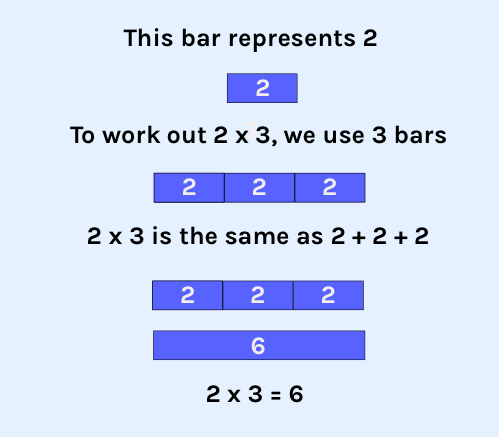
How you can help your child understand that multiplication is commutative
This may sound like a scary term, but we promise it’s not!
Commutativity means that changing the order that the calculation is done in does not change the outcome of the calculation
Take a look at the example below for a quick explanation:
We can switch the numbers we multiply around, and we’ll still get the same answer:
2 x 3 = 6
3 x 2 = 6
That’s because multiplication is commutative.
If we try the same with division, it doesn’t work.
6 ÷ 2 = 3
2 ÷ 6 = 0.33333333333
They’re not the same answer, so division is not commutative.
Once your child knows these rules, it will be a lot easier for them to see how multiplication and division work.
When helping your child with their times tables at home, practise switching numbers around in the times tables to show just how easy commutativity is.
Ask the following questions in pairs and ask your child what they notice:
2 x 1 = ?
1 x 2 = ?
2 x 3 = ?
3 x 2 = ?
5 x 2 = ?
2 x 5 = ?
Hopefully, your child will observe that whilst each of the calculations looks slightly different, each pair gives the same answer.
How to help your child with multiplication problems at home
Multiplication problems in Year 2 are usually one-step, which means there’s only one process to complete.
The hardest part – to a 6 year old mind – is knowing which process to use, so a simple way you can help your child to learn multiplication at home is to point out words in the question that give you clues.
This question below has the word altogether. This tells us that the answer will be bigger than the numbers in the question. That means it must be addition or multiplication.
‘2 bags of 3 sweets’ tells us that we’re looking at ‘groups of’ or ‘lots of’.
This kind of language is usually about multiplication.
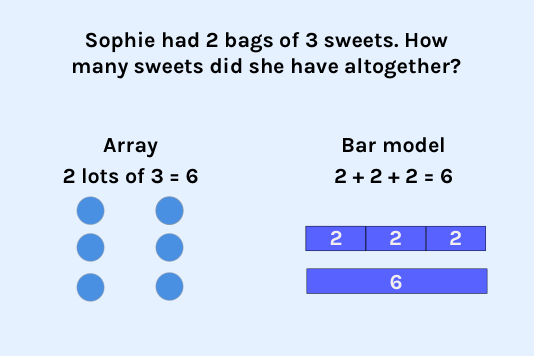
Make sure you spend some time with your child helping them to brush up on mathematical vocabulary often – revision can make this kind of problem much easier!
If you know what the word ‘altogether’ means, you can hazard a good guess that the answer will be bigger than the two numbers in the question.
And that’s a huge step forward for understanding at this age!
A fun way to practise multiplication with 6 year olds – Using real-life maths to master multiplication problems
Making up simple times tables word problems on the go will help your child find them much easier to answer. Offering them the chance to sit at a table and answer questions versus heading out to help you with the shopping is only going to present one winner!
When you go shopping, ask questions that will get them thinking and give you a chance to demonstrate the answer (using concrete manipulatives if needs be.)
- “If I buy 2 bags of 5 cookies, how many will there be altogether?”
- “How much will 3 bags that cost 5p each cost altogether?”
- “If 100g of cheese costs 50p, how much will 300g cost?”
It may not seem like much, but this is one of the best ways to help your child with times tables at home!
How to learn times tables in Year 3 – 7 and 8 year olds
With a solid foundation for multiplication formed in Year 1 and 2, Year 3 children are ready to learn more complex written methods for multiplication.
Whilst it’s important to get familiar with these written methods, make sure you don’t neglect the times tables, either – learn the 3, 4, and 8 times tables inside out for a significant advantage.
How to help your 7 year old with written multiplication (2 by 1 digit)
Kids who are confident with their mental maths and their times tables will find the formal written method much easier, so brush up on the basics if you need to.
The formal written method of multiplication is when you write down your calculations – it’s used when dealing with bigger numbers (ones that take too long to do in your head).
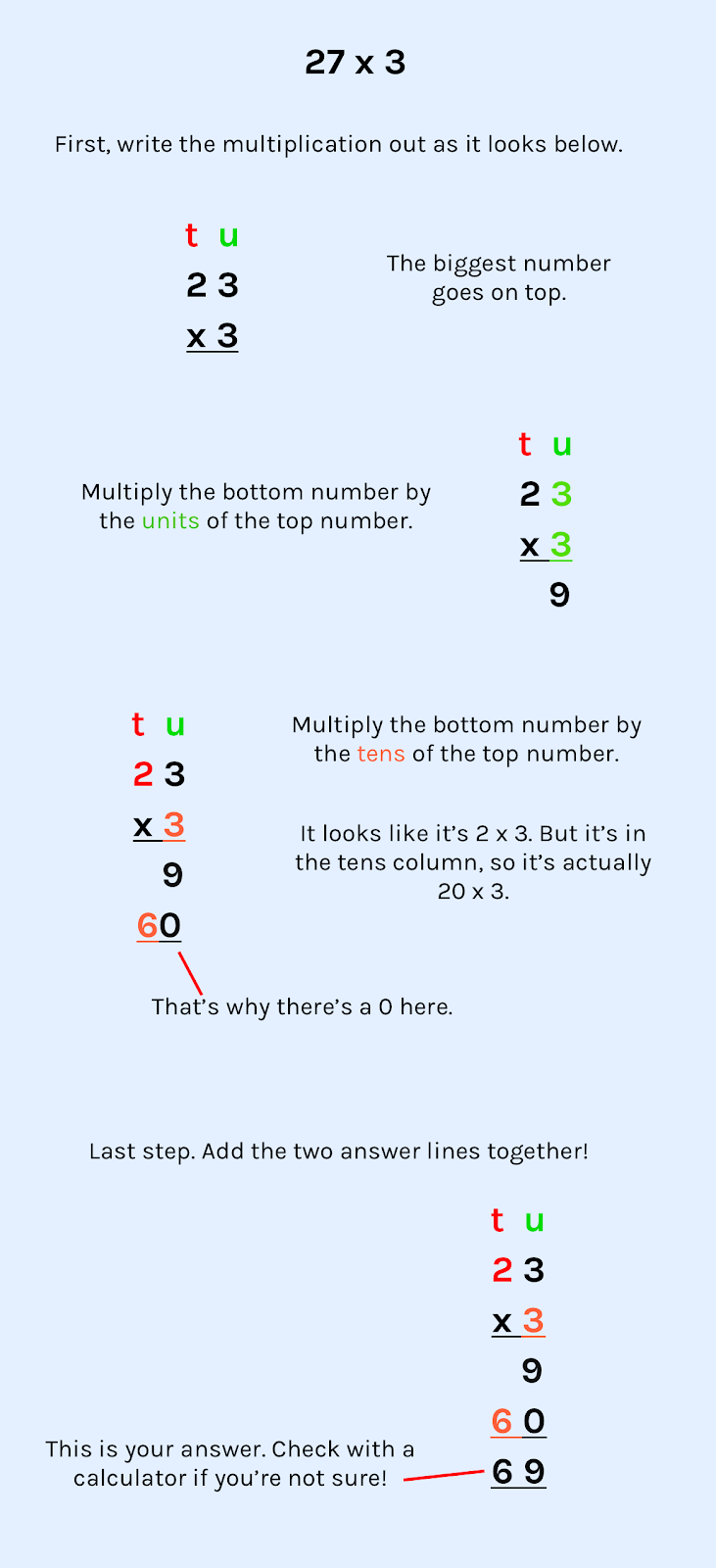
This written method can help children to break down potentially tricky multiplication questions into much smaller and more manageable chunks. When using this method, if your child makes a mistake at any point in the calculation, you will easily be able to see where it has happened and go back to help them work out how to get to the right answer.
P.S. Your child may be more familiar with the “u” for “units” in the above example being replaced with and “o” for “ones”. If this is the case, simply swap the two letters around as the term that is used can vary from school to school.
How to teach your child about missing number problems in multiplication
Missing number problems help your child to understand how the relationship between multiplication and division work.
They might sound a little confusing, but they are actually very simple.
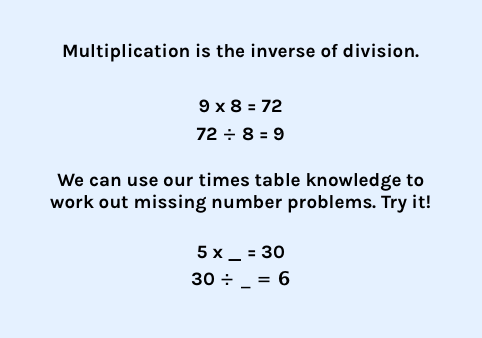
To help your child with missing number problems at home, all you need to do is write up a list of calculations (only going up to the 10 times tables), and leave some blank for them to fill in.
See below for some examples:
2 x _ = 8
8 ÷ _ = 4
3 x _ = 21
21 ÷ _ = 7
See more: Times table worksheets
What else will your child need to know for multiplication in Year 3?
In Year 3, your child will also come across problems involving correspondence and scaling, which may seem daunting to them at first.
However, once they have got the formal written method down and they’re armed with multiplication facts and division facts, these sorts of problems will be a breeze.
Helping your child tackle correspondence problems when your child is in Year 3
One-to-one correspondence is how we learn to count.
You see one object and learn that it corresponds to the number 1.
However, correspondence in Year 3 goes beyond the simplistic one-to-one knowledge required in early years.
For example, in a Year 3 multiplication question you might have one pizza, but it’s cut into 4 pieces.
So if you had 2 pizzas and wanted to know how many slices you had, you would use multiplication to work it out.
4 slices each x 2 pizzas
4 x 2 = 8 slices
Correspondence can be a tricky concept to grasp for children initially, but once you have demonstrated it around the home things should become a lot clearer.
Scaling the problem of scaling with your 7 year old
Scaling just means stretching an amount to make it bigger or shrinking it to a smaller value.
In Year 3, scaling is only used with positive whole numbers.
Look out for phrases like twice as big or half the size when working through multiplication questions with your child.
Scaling is simple – you multiply or divide by the number in the phrase.
So if you’re looking at a recipe and need twice as much to serve more people, get your child to help you work out the quantities!
Or, if you are doing the gardening with your child and need to make the flowerbed half the size it currently is, ask them to work out what that would be.
There are hundreds of ways to test your child’s scaling knowledge, you just need to be a little creative to find some of them!
Fun ways to learn times tables at home with your 7 year old child
Speed tables game!
What’s the game about?
Recalling times tables as quickly as possible, which is a handy thing to be able to do when the exams come around!
How to play:
- Take it in turns to call out the answers to your 2, 5 and 10 times tables as fast as you can.
- Make sure you time each other.
- How fast can you get through the 2s, 5s, and 10s?
- Turn it into a weekly Sunday afternoon competition and keep track of the results with a leaderboard. Who will be the reigning times tables champion?!
Car modelling game
What’s the game about?
Parked cars make great bar models on the go and are a fun and easy way to practise this useful maths method!
How to play:
- Find a line of parked cars and count them together.
- How many cars would there be on two streets?
- How about three?
- Go up to the times table you want to practise the most, adding a new street each time to increase the times table.
Scaling windows game
What’s the game about?
Scaling can seem like a scary word to many primary school kids, but it doesn’t have to be with this game as it can help them bring scaling in to the real world!
How to play:
- Count the number of windows on a house you pass by.
- How many windows would the house have if it were five times bigger?
- Have a go at seven times bigger.
- Or half the size?
Try more: 35 fun times tables games and more maths games to do at home (including card games, dice games and games for car journeys!)
How to learn times tables in Year 4 – 8 and 9 year olds
Year 4 is important when it comes to building a good foundation for primary maths. Children start to multiply bigger numbers using written methods and decimals come into play.
There’s a focus on learning new methods in maths lessons this year, but it’s crucial to keep practising word problems too (that way they don’t come as a nasty surprise in Year 6).
By the end of Year 4, your child should have a good grasp of the times tables (and their division facts) up to 12 x 12.
Near the end of Year 4, children take the pupil multiplication tables check, a national test to ensure pupils are on track and to identify which students may need extra help.
Top tip for Year 4 multiplication!: Regular times tables practice makes multiplication in KS2 a much easier ride. Figure out how to help your child memorise multiplication tables and you have given them a fantastic headstart!
How you can help your child with long multiplication (3 by 2 digit)
Long multiplication is used for bigger numbers.
There are a few steps involved, but with good times table knowledge and neat presentation, it can be a handy method to know for any budding 8 year old mathematician.

As mentioned, this method does involve quite a few steps, but by doing it in this way, not only will your child be able to visualise the process clearly, but you will be able to spot any mistakes and help guide them to the correct answer.
P.S. Your child may be more familiar with the “u” for “units” in the above example being replaced with and “o” for “ones”. If this is the case, simply swap the two letters around as the term that is used can vary from school to school.
How you can help to teach your child times tables at home – Introducing Fizz Buzz the game!
This popular classroom game can be easily adapted for home and is a great way to tackle times tables in a fun way!
How to play:
- Choose the times table you would like to practise.
- Take turns with your child take turns to count from 1 (or you can get the whole family in on this one).
- When you get to a multiple in your chosen times table, you must say “FIZZ!” instead of the number.
- A way you can make it harder is to add an extra rule. If any number contains the same number you chose for the times table, you have to say BUZZ!
Have a look at this written example:
Fizz Buzz for the 3 times table
1, 2, FIZZ, 4, 5, FIZZ, 7, 8, FiZZ, 10, 11, FIZZ, BUZZ
How to learn times tables in Year 5 – 9 and 10 year olds
At this point, there’s not much new material when it comes to multiplication and learning times tables.
This means that if you find yourself wondering how to help your child in Year 5. In fact you can help them both to get to grips with the written methods, so bigger numbers aren’t so intimidating, and to start thinking of the most efficient way to tackle a multiplication question. It’s not always the written method!
Multiplication of decimals is the only truly new concept this year and it’s surprisingly simple.
How to help your child with the multiplication of decimals
Once you’ve mastered long multiplication, you can multiply pretty much any large number.
However, when it comes to decimals, there’s another method that saves time and confusion.
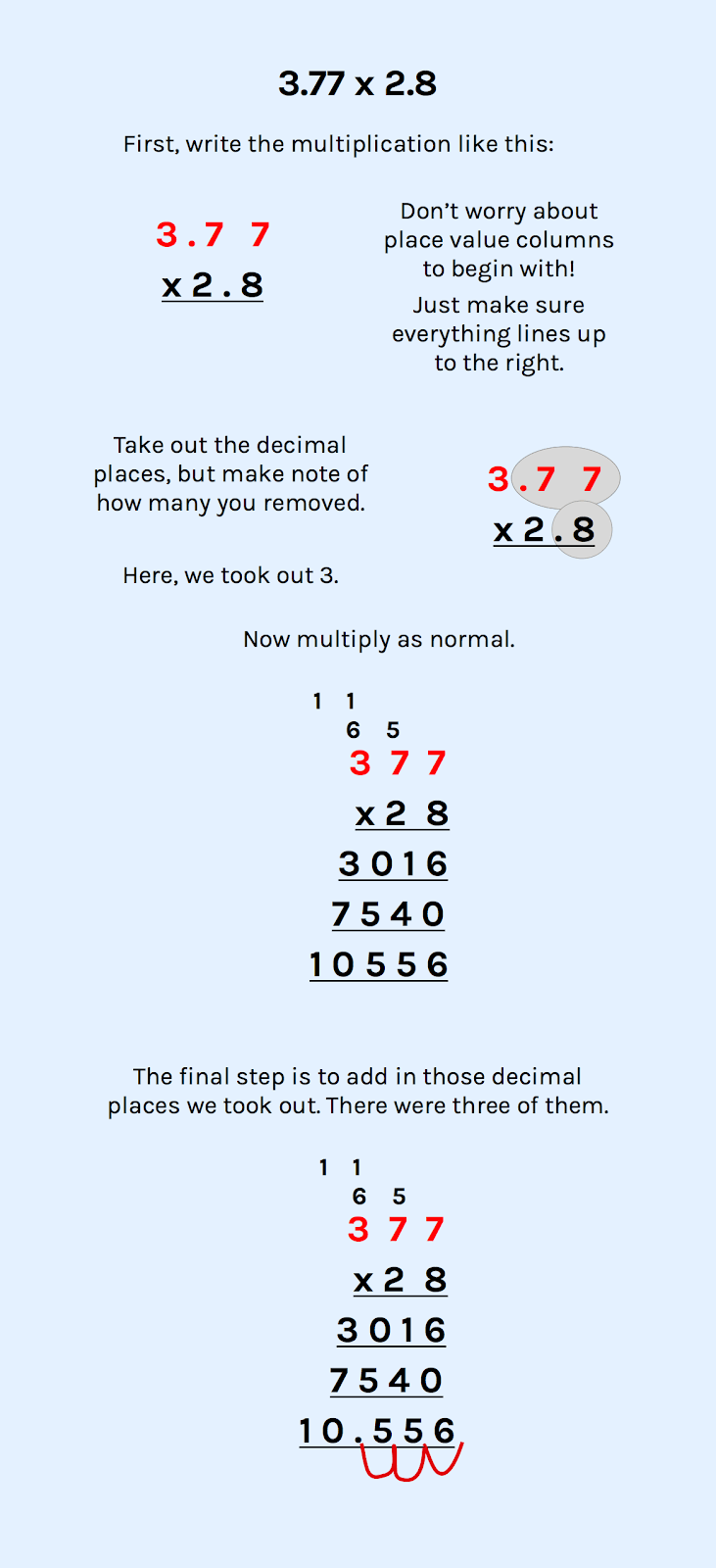
This is a process that may seem a little confusing to your child the first few times they try it, but by practising it on a regular basis with you, they should soon get the hang of it and have no problems multiplying decimals when the time comes at school.
This is one of the most intimidating parts of multiplication for many young minds, so if you can take the time to help teach your child multiplication of decimals, you can guarantee that it will be worth it in the long run.
How to help your child with square numbers
Square numbers are a concept that may seem simple to adults, but until they are explained to primary school students they can seem a bit baffling!
As you know, a square number simply means that you multiply a number by itself, and it can be written out as a multiplication or as a superscript 2, like this:
2 x 2 = 2²
By addressing the existence of square numbers early on in Year 5, and helping your child to understand what they are and how they work, you can prevent confusion from reigning further down the line should they see them for the first time.
Spend some time writing out and going through all of the square numbers up to 12 x 12 with your child – as well as helping them to get to grips with square numbers, this exercise can also help your child practise their times tables at home!
A fun way to practise times tables at home in Year 5
Money multiplication
Practise multiplying decimals using money. You don’t have to shell out extra pocket money to do this – you can get your child to help with things like shopping receipts, bills and future budgets too.
These are all great life lessons and your child will enjoy the responsibility at an age when they feel like they’re practically grown ups.
Example questions could be:
“I bought two t-shirts that cost £4.56 each. Can you tell me how much the total amount should be on the receipt?”
“We bought 4 meals from the restaurant with a special offer, so they cost £10.50 each. How much should the total be?
“Every month we spend £11.42 on our water bill. How much will it cost us over the year?”
There are of course a huge number of questions you could ask, but these are just a source of inspiration!
How to learn times tables in Year 6 – 10 and 11 year olds
Year 6 is when everything comes together… that’s why it can sometimes be a challenge!
If there are gaps from earlier on in primary school, this is the year when everyone feels the pressure to fill them in.
This is why it is always best to make sure your child starts with the basics and works their way up to the more difficult questions and tasks, as without a solid grounding in the topic, multiplication or otherwise, their chances of progressing quickly and smoothly are drastically lowered.
Where multiplication is concerned though, if you get your times tables on lockdown, other methods become much faster and more like second nature. As well as knowing that 6 x 7 = 42, it is important that your child learns the vocabulary around multiplication too, so that they don’t get caught out when sitting their SATs.
Key vocabulary for Year 6 multiplication
Prime number: Any positive whole number bigger than 1 that can only be divided by 1 or itself.
Composite number: Any positive whole number that isn’t a prime number.
Square number: A number multiplied by itself, like 2 x 2.
Cubed number: A number multiplied by itself and then multiplied by itself again, like 2 x 2 x 2.
Factor: Any number that you multiply by another number.
Common factors: Two or more numbers that can be used to make the same product (answer).
Multiple: Multiples are the many different answers you could get if you multiplied your number by another number.
Common multiple: When the same number happens in different times tables, we call it a common multiple.
How to help your child identify common factors and common multiples
There’s a difference between factors, multiples and products. But with so much new vocabulary flying about this year, many students mix them up. Luckily though, with a bit of practice, you can help your child master their multiplication vocabulary!
What are factors?
Factors are the numbers that you multiply together.
The answer to this is called the product.
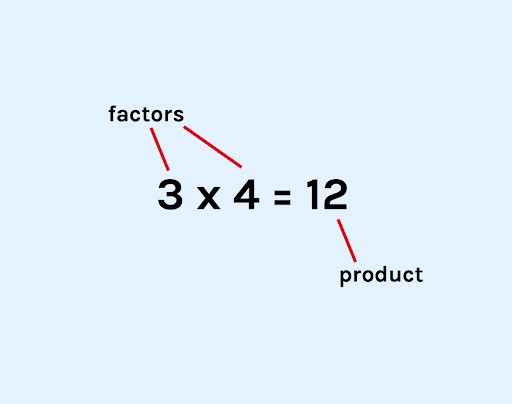
If you have two different products (or answers), but they have a factor in common, we call it a common factor.
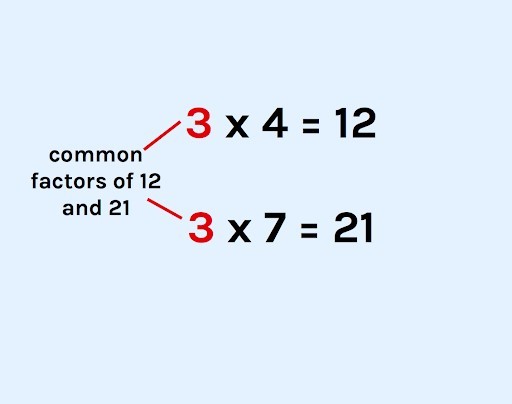
To help your child get to grips with this at home, you can practise alongside them and take it in turns to write out simple multiplication problems for each other, and then label each part of the problem.
This activity might be simple, but it will prove to be a good test for both your child and you!
Third Space Learning’s online tutoring programme works with students, one-on-one to strengthen their multiplication skills.
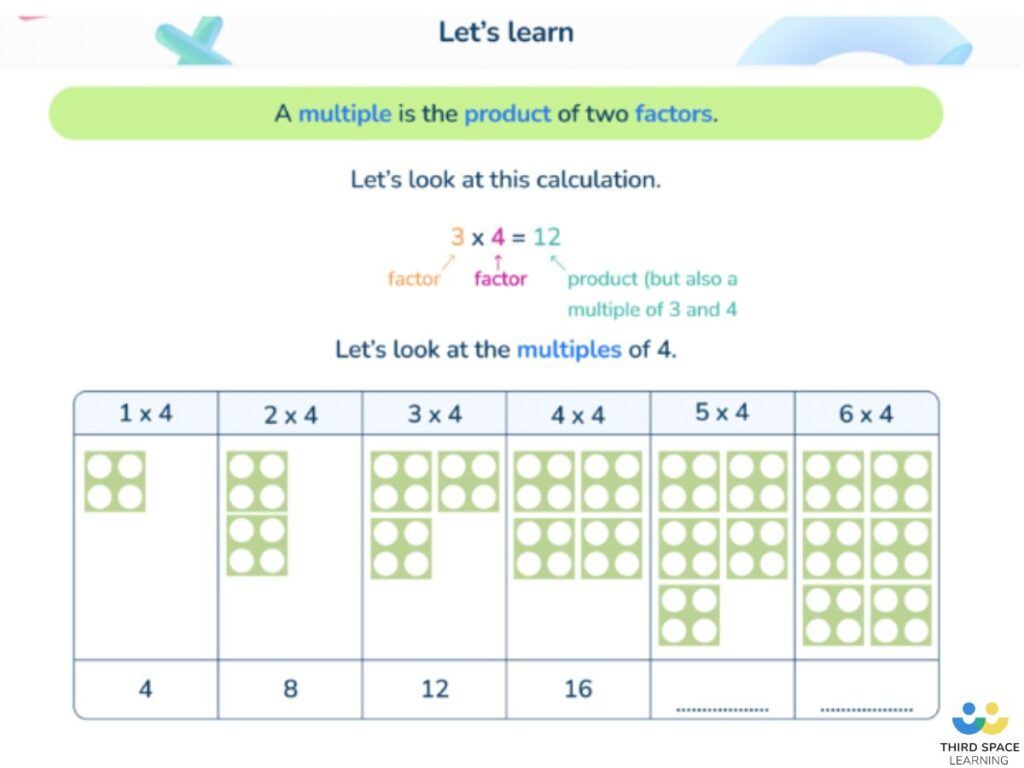
What are multiples?
Multiples are the many different answers you could get if you multiplied your number by another number. They make up the times tables. When the same number happens in different times tables, we call it a common multiple.
How to practise finding common factors and multiples with your child at home
Finding common factors can be made simple by using a large number line.
How to:
- Use a number line that goes up to 144, or make your own out of blank sheets of paper.
- Colour code the numbers 1 to 12 with a dot under each one.
- Now use each colour to label multiples of these numbers.
- For example, if you put a blue dot under the number 2, you’d also put a blue dot under every other number in the 2 times table.
- Use the number line to work out which numbers have factors in common by seeing which numbers share the same colour dots. These are common factors.
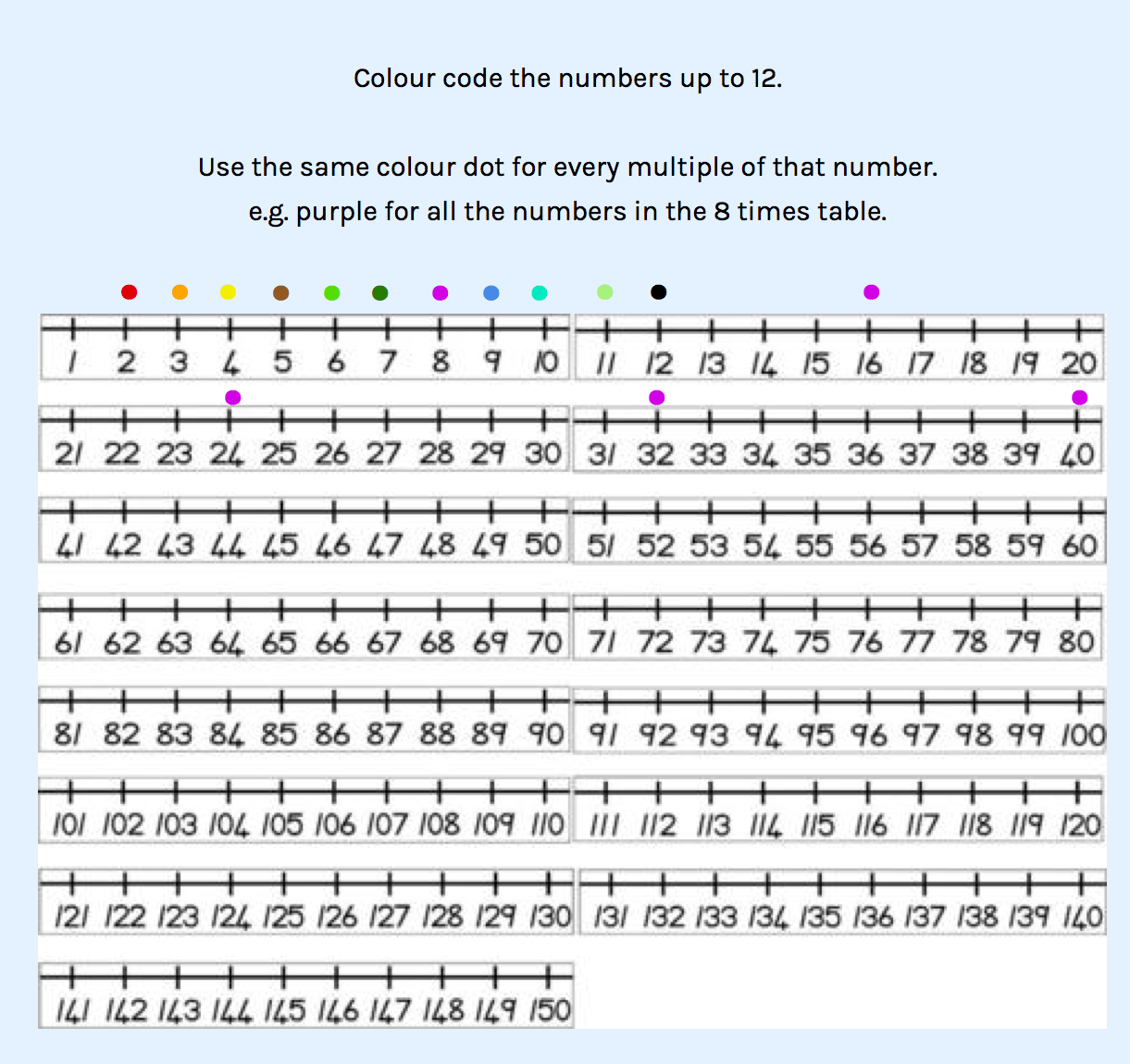
Finding prime numbers
Look at your number line. You’ll notice that some numbers are only in the 1 times table. These are prime numbers. They can only be divided by 1 and themselves. Circle the prime numbers on your number line.
Any positive number that isn’t a prime number is called a composite number.
Making sure your child is comfortable with reasoning and problem solving multiplication questions
In Year 6, reasoning and problem-solving skills become much more important, and this means that you should encourage your child to practise them as often as you can.
Get your child to practise using test questions often and come up with your own process for working through them. What works will be different for every child, but here’s an example of how you could tackle a tricky word problem:
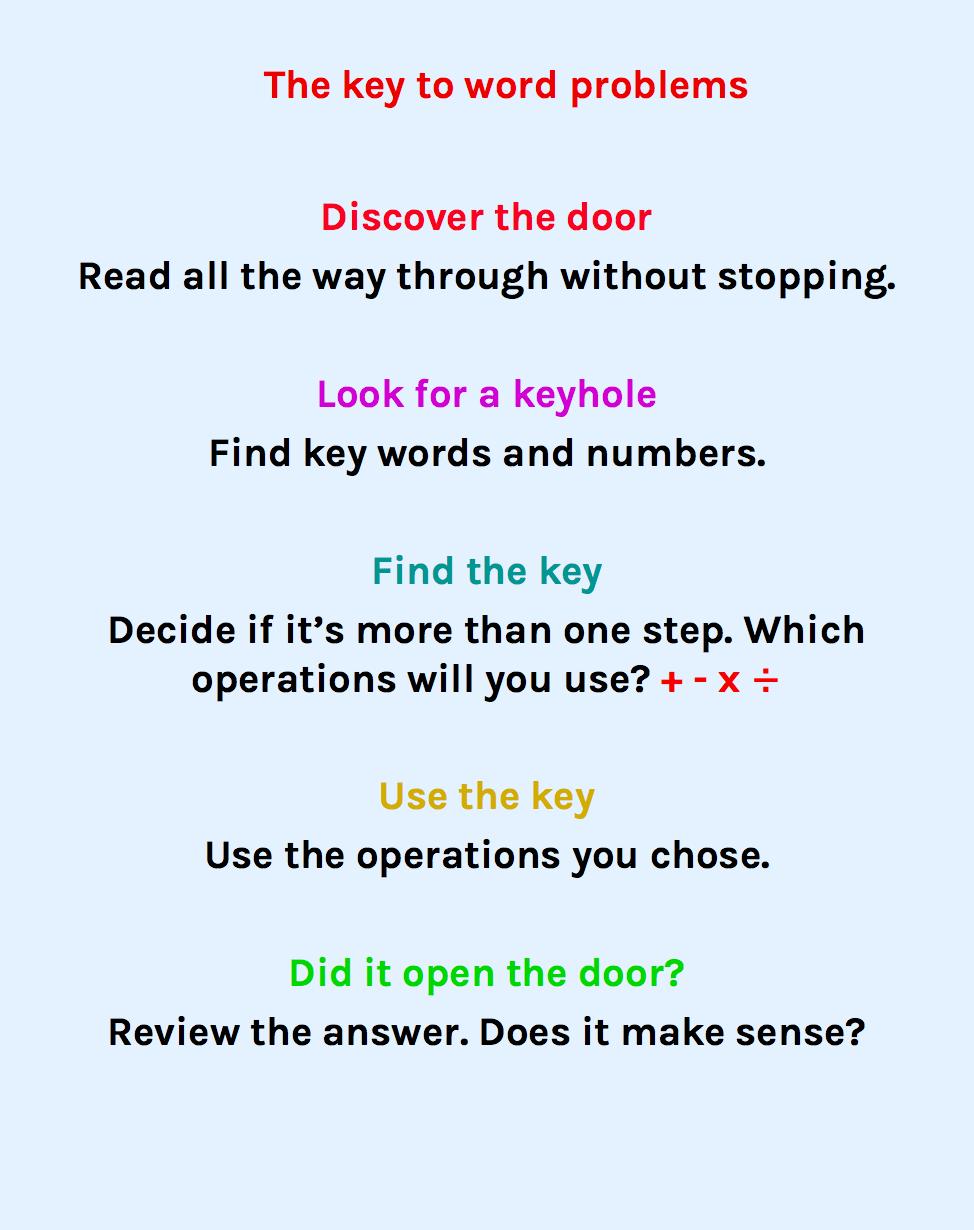
Vocabulary is also important for word problems, so ensure your child revises mathematical vocabulary often to make them much easier to access.
Fun ways to practise multiplication and times tables at home in Year 6
While it might seem like there’s no time for fun in Year 6, it’s actually very important to make sure your child feels good about maths.
Nerves on the day of the exam can be detrimental, so make sure any maths practice at home is light-touch and light-hearted.
Help your child to open a savings account
Okay, so this might not seem like the most appealing thing to your average 10 year old, but they will definitely thank you in the long-run (and it’s a great chance to squeeze in some multiplication at home.)
Get your child to open a young savers account and work out how much interest they’ll make each year.
What could they buy if they leave it in there for five years? How about ten years?
Let the bank staff know that you’re trying to help your child improve their multiplication skills, and assuming you get a friendly member of staff, they’ll get a real life lesson in why maths is important.
Take your child on a trip to the sales
Get to the shops and ask your child to mentally work out any discounts they see.
Knowing how to mentally work out a 20% or 50% discount is challenging, but it makes use of key skills that will benefit every area of key stage 2 maths.
Plus, if you make this a trip to the toy shop you can combine work and reward!
Looking for more maths at home support? This selection of all our free home learning packs includes lots of worksheets and support for learning times tables in Key Stage 2.
DO YOU HAVE STUDENTS WHO NEED MORE SUPPORT IN MATHS?
Every week Third Space Learning’s maths specialist tutors support thousands of students across hundreds of schools with weekly online maths tuition designed to plug gaps and boost progress.
Since 2013 these personalised one to one lessons have helped over 150,000 primary and secondary students become more confident, able mathematicians.
Learn about the scaffolded lesson content or request a personalised quote for your school to speak to us about your school’s needs and how we can help.

